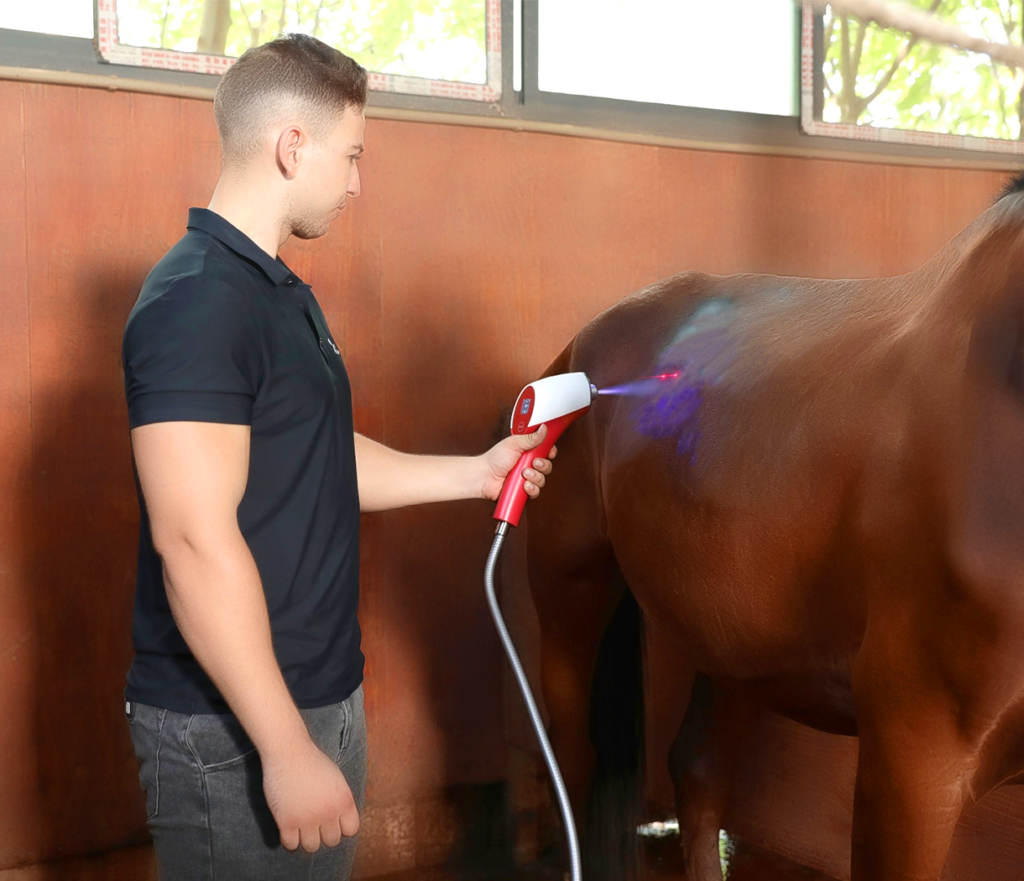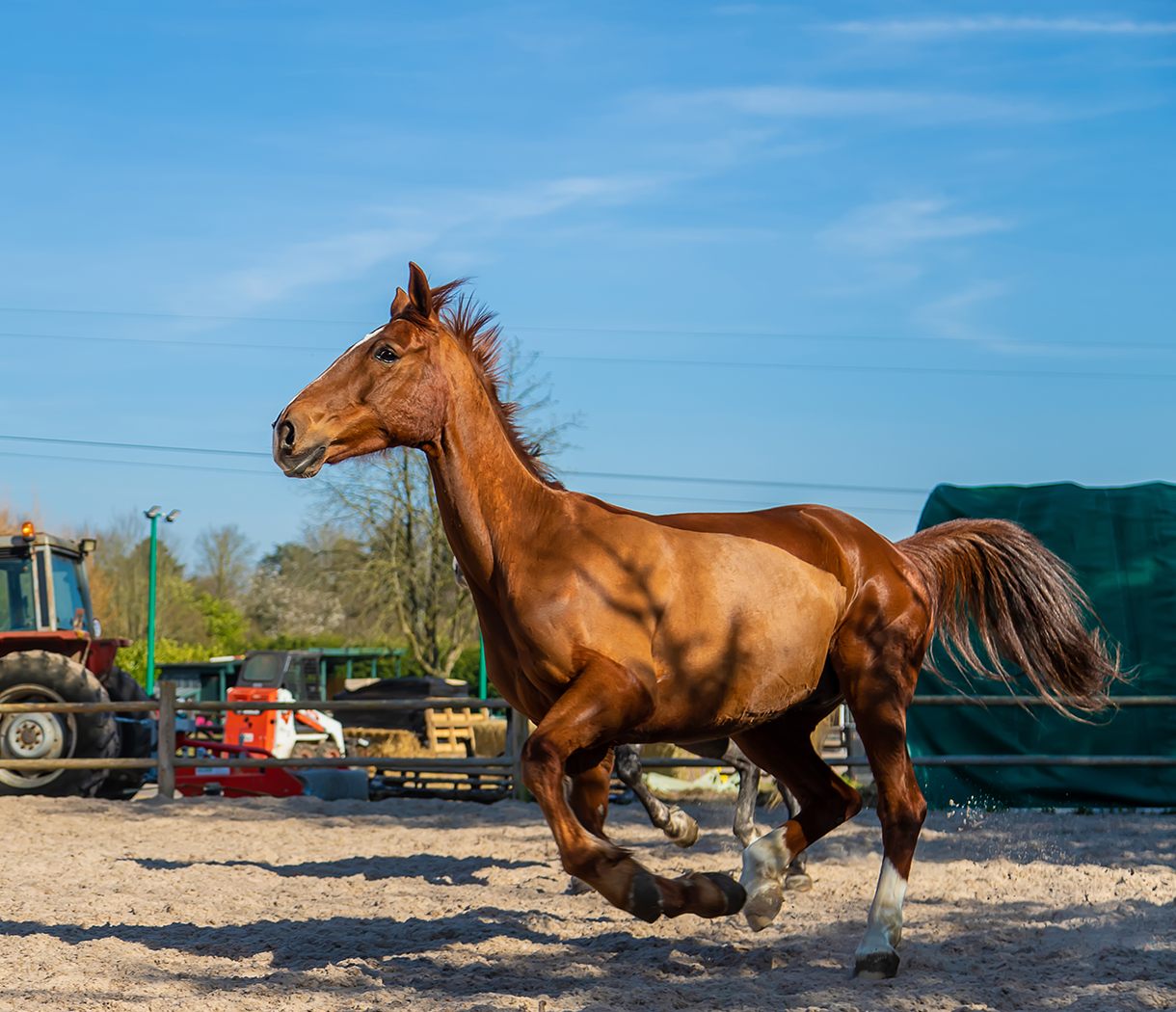Introduction to CO₂ Cryotherapy in Equine Care
What is CO₂ Cryotherapy in Equine Care?
CO₂ cryotherapy, also known as carbon dioxide cryotherapy, is an advanced therapeutic technique that utilizes extremely cold CO₂ gas (-78°C) to target specific areas of a horse’s body. This non-invasive treatment works by applying controlled cold temperatures to the skin’s surface, which penetrates deep into the tissues, triggering a cascade of physiological responses. These include vasoconstriction followed by vasodilation, reduced inflammation, and stimulation of cellular repair mechanisms. Unlike traditional cryotherapy methods that rely on ice or cold water, CO₂ cryotherapy offers a more precise and efficient approach, making it a game-changer in equine care.
The Importance of Cryotherapy in Equine Health
Cryotherapy has been a cornerstone in equine health for decades, primarily used to manage injuries, reduce inflammation, and enhance recovery. However, CO₂ cryotherapy elevates this practice by providing deeper tissue penetration, faster results, and a more targeted application. With the increasing demands on performance horses and the need for effective, non-invasive treatments, CO₂ cryotherapy is becoming an indispensable tool in modern equine wellness programs. Studies have shown that regular cryotherapy sessions can reduce recovery times by up to 30% in horses with soft tissue injuries, making it a valuable addition to both preventive and rehabilitative care.
The Science Behind CO₂ Cryotherapy for Horses
Mechanism of CO₂ Cryotherapy
The therapeutic effects of CO₂ cryotherapy are rooted in its ability to induce controlled thermal stress on the skin and underlying tissues. When CO₂ gas is applied, it rapidly cools the skin surface to temperatures as low as -78°C, causing immediate vasoconstriction. This reduces blood flow to the area, minimizing inflammation and swelling. After the cold application is removed, a rebound effect called vasodilation occurs, increasing blood flow and delivering oxygen and nutrients to the damaged tissues. This process, known as the “hunting response,” is critical for tissue repair and regeneration.
Additionally, the cold stimulus activates the release of endorphins, which act as natural painkillers, and stimulates the production of collagen, a key protein in tissue healing. Research has demonstrated that CO₂ cryotherapy can reduce levels of pro-inflammatory cytokines (e.g., IL-6 and TNF-α) by up to 40%, further supporting its anti-inflammatory benefits.
Benefits of CO₂ Cryotherapy in Equine Care
Pain Relief: CO₂ cryotherapy effectively numbs nerve endings, providing immediate pain relief for conditions like arthritis, tendonitis, and laminitis. A 2021 study published in the Journal of Equine Veterinary Science found that 85% of horses treated with CO₂ cryotherapy showed significant pain reduction within 24 hours.
Inflammation Reduction: By reducing pro-inflammatory cytokines, CO₂ cryotherapy helps manage swelling and edema. This is particularly beneficial for acute injuries and post-surgical recovery.
Improved Circulation: Enhanced blood flow delivers oxygen and nutrients to damaged tissues, speeding up recovery. A 2020 study reported a 25% increase in microcirculation in treated areas after CO₂ cryotherapy sessions.
Non-Invasive and Safe: Unlike surgical interventions, CO₂ cryotherapy poses minimal risk of complications when administered correctly.

Applications of CO₂ Cryotherapy in Equine Care
CO₂ cryotherapy is a versatile treatment with a wide range of applications in equine care. Below are some of the most common and effective uses:
Keeping Performance Horses in Top Shape
Performance horses, such as racehorses, show jumpers, and eventers, are prone to overuse injuries and muscle fatigue due to the intense physical demands placed on them. CO₂ cryotherapy is increasingly used as a preventive measure to maintain peak performance. Regular sessions help reduce muscle soreness, improve flexibility, and enhance recovery after intense training or competitions. For example, a 2022 study involving Thoroughbred racehorses found that those receiving bi-weekly CO₂ cryotherapy sessions had a 20% lower incidence of soft tissue injuries compared to untreated horses.
Injury Treatment and Rehabilitation
CO₂ cryotherapy is highly effective in treating a range of injuries, including:
Tendon and Ligament Injuries: Accelerates healing of strained tendons and ligaments by reducing inflammation and promoting collagen production. A 2019 study reported a 35% faster recovery rate in horses with tendon injuries treated with CO₂ cryotherapy compared to traditional methods.
Joint Disorders: Manages conditions like osteoarthritis and synovitis by alleviating pain and improving joint mobility. Research shows that CO₂ cryotherapy can reduce lameness scores by up to 50% in horses with degenerative joint disease (DJD).
Hoof Conditions: Helps treat laminitis and navicular syndrome by improving blood flow to the hoof. A 2020 case study demonstrated a 40% improvement in hoof comfort and mobility after four weeks of CO₂ cryotherapy treatment.
Muscle Strains and Tears: Reduces swelling and promotes healing in muscle injuries, commonly seen in sport horses.
Pain Management in Horses
Chronic pain conditions, such as degenerative joint disease (DJD) and back pain, can significantly impact a horse’s quality of life. CO₂ cryotherapy offers a drug-free alternative for pain management, reducing reliance on medications like NSAIDs (non-steroidal anti-inflammatory drugs). A 2021 survey of equine veterinarians found that 70% reported improved pain management outcomes in horses treated with CO₂ cryotherapy.
Post-Surgical Recovery
CO₂ cryotherapy is increasingly used to support post-surgical recovery in horses. By reducing swelling and pain, it helps horses regain mobility faster and minimizes the risk of complications. A 2020 study involving post-arthroscopic surgery cases found that horses treated with CO₂ cryotherapy had a 30% shorter recovery time compared to those receiving standard care.
Dermatological Conditions
CO₂ cryotherapy can also be used to treat skin conditions such as sarcoids, warts, and dermatitis. The cold temperature destroys abnormal tissue while promoting healthy skin regeneration.
Neurological Conditions
Emerging research suggests that CO₂ cryotherapy may benefit horses with neurological conditions, such as equine protozoal myeloencephalitis (EPM), by reducing inflammation in the nervous system and improving nerve function.

Implementing CO₂ Cryotherapy in Equine Care Practices
Growing Popularity of Cryotherapy Among Horse Owners
The adoption of CO₂ cryotherapy among horse owners has surged in recent years, driven by its proven effectiveness and non-invasive nature. According to a 2022 survey by the American Association of Equine Practitioners (AAEP), 65% of horse owners reported using or considering cryotherapy for their horses, particularly for injury prevention and recovery.
Social media and equine forums have played a significant role in spreading awareness, with many owners sharing success stories and testimonials. For example, a case study involving a show jumper with chronic tendonitis showed a 40% improvement in mobility after six weeks of CO₂ cryotherapy treatment.
How Veterinarians are Embracing CO₂ Cryotherapy for Horses
Veterinarians are increasingly incorporating CO₂ cryotherapy into their treatment plans, recognizing its potential to enhance outcomes and improve patient care. Many clinics now offer cryotherapy services, and some practitioners are investing in portable units for on-site treatments. A 2021 survey of equine veterinarians found that 75% had used CO₂ cryotherapy in their practice, with 90% reporting positive results. Veterinarians are also collaborating with researchers to explore new applications, such as treating neurological conditions and post-surgical recovery.
Is CO₂ Cryotherapy Worth the Investment for Horses?
While the upfront cost of CO₂ cryotherapy may seem high, the long-term benefits often justify the investment. For performance horses, regular cryotherapy sessions can prevent injuries, reduce downtime, and enhance performance, potentially saving thousands of dollars in veterinary bills and lost training days. A 2021 study published in the Journal of Equine Veterinary Science found that horses receiving CO₂ cryotherapy had a 25% lower incidence of injuries and a 20% faster recovery rate compared to untreated horses.
For horse owners managing chronic conditions like arthritis or laminitis, CO₂ cryotherapy offers a drug-free alternative to long-term medication use, reducing the risk of side effects and associated costs. Overall, the return on investment (ROI) for CO₂ cryotherapy is significant, particularly for competitive horses and those with recurring health issues.
Potential Risks and Limitations of CO₂ Cryotherapy in Equine Care
Understanding the Risks of Cryotherapy for Horses
While CO₂ cryotherapy is generally safe, improper application can lead to adverse effects, such as frostbite, skin irritation, or tissue damage. To minimize risks, it is essential to work with trained professionals who understand the correct protocols for temperature and duration.
A 2020 study highlighted that less than 5% of horses experienced mild side effects, such as temporary redness or discomfort, which resolved within 24 hours. Proper training and adherence to safety guidelines are critical to ensuring positive outcomes.
When CO₂ Cryotherapy Might Not Be Suitable for Horses
CO₂ cryotherapy may not be suitable for horses with certain conditions, including:
Open wounds or infections: Cold temperatures can impede healing in damaged or infected tissues.
Hypersensitivity to cold: Some horses may have an adverse reaction to extreme cold.
Circulatory disorders: Conditions like thrombosis or severe vascular disease may be exacerbated by cryotherapy.
A thorough veterinary assessment is essential before starting treatment to ensure the horse is a suitable candidate.
FAQs: Answering Common Questions About CO₂ Cryotherapy
Q1: How long does a CO₂ cryotherapy session last?
A session typically lasts 10-15 seconds per treatment area. A handheld device delivers CO₂ gas at -78°C to the targeted area. The treatment is pain-free and well-tolerated, with multiple sessions recommended for chronic conditions.
Q2: How soon can results be seen?
Many horses show immediate pain relief after the first session. For chronic conditions like arthritis, noticeable improvements are seen after 3-6 sessions, with some horses experiencing 30-50% better mobility.
Q3: Is CO₂ cryotherapy painful for horses?
No, it is not painful. Most horses adapt quickly to the cold sensation. Rare cases of mild discomfort can be managed by adjusting the treatment duration or temperature.
Q4: How often should CO₂ cryotherapy be used?
For acute injuries, sessions are administered 2-3 times per week. For chronic conditions or maintenance, once a week is usually sufficient. Frequency may vary based on the horse’s response.
Q5: Can it be used with other treatments?
Yes, it complements therapies like physiotherapy and laser therapy, and can reduce the need for medications like NSAIDs. Always consult a veterinarian for a tailored treatment plan.
Q6: Is it safe for older horses?
Yes, it is safe and beneficial for older horses with conditions like arthritis. However, horses with circulatory disorders, open wounds, or infections may not be suitable candidates.
Q7: What equipment is needed?
A CO₂ cryotherapy machine and medical-grade CO₂ gas are required. Portable units, like those from Local Cryotherapy, are popular for their convenience and versatility.
Q8: Are there long-term side effects?
No long-term side effects have been reported. Temporary redness or irritation may occur but typically resolves within 24 hours. Proper training and safety protocols minimize risks.



